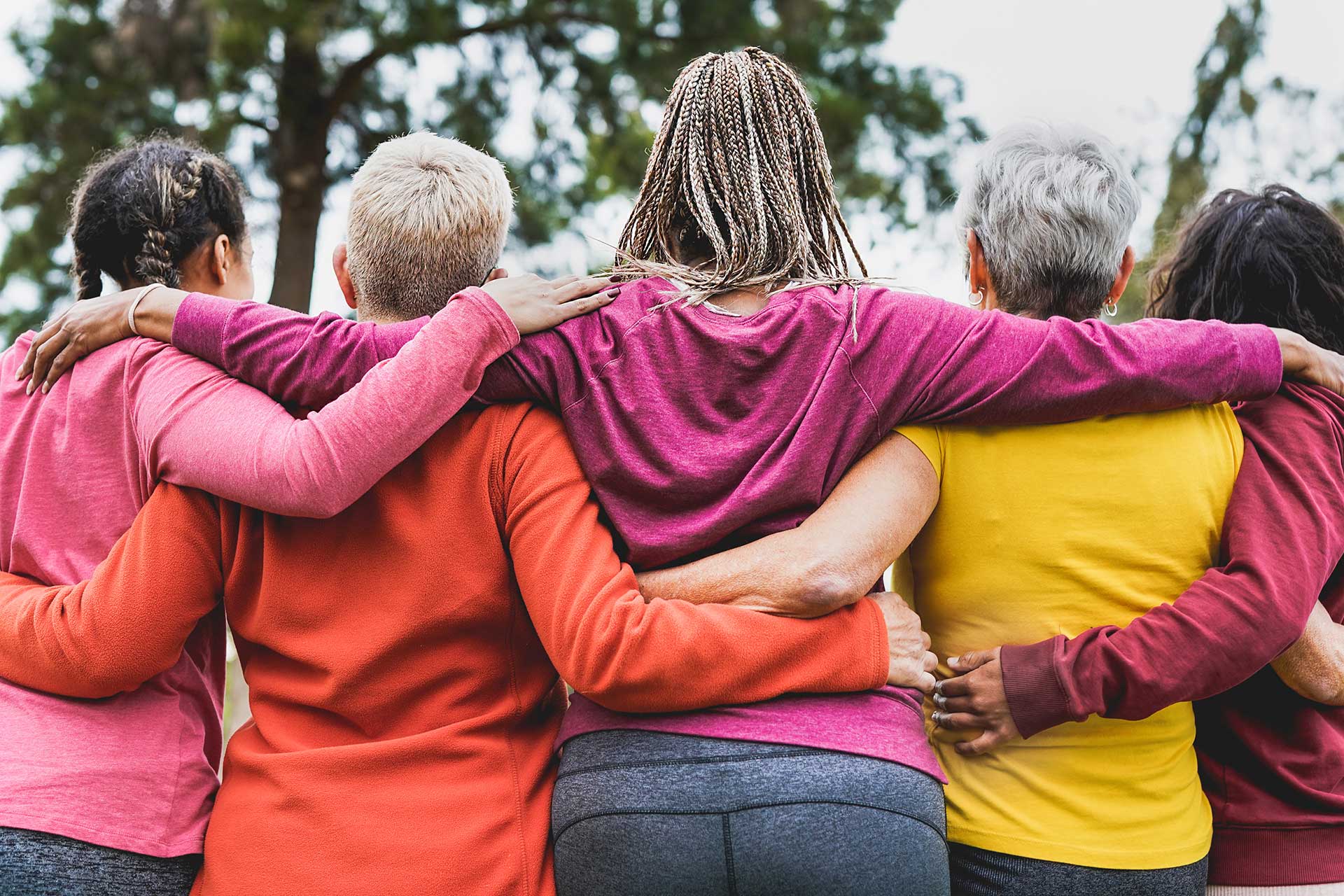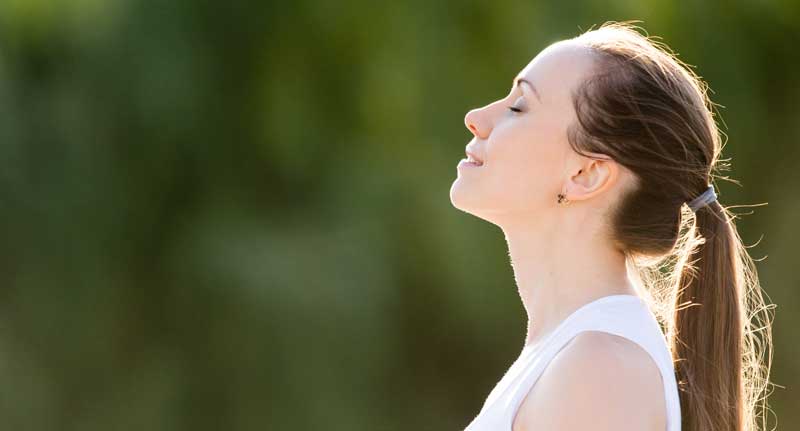Health & Wellness – Sensory Integrations
Colour Webinar – Sensory Integrations
Sound Webinar – Sensory Integrations
Five of our favourite podcasts from vital.ly
Over the past twelve months vital.ly has been sharing podcasts from Australia’s leading naturopaths, nutritionists and natural medicine practitioners. If you are interested in a range of health topics or just want to find out more about what’s happening in the natural medicine industry then jump on the podcast for relevant content.
During Natural Medicine Week vital.ly will be sharing some of their favourite podcasts with you and if you want a quick link to the content here are the Top 5 from their library.
First up Ageing Outrageously with Christine Pope looks at the latest research on how to age well and support your brain health. In particular, in this podcast there is a useful discussion on the importance of balancing blood sugar for improving metabolic health and looking at key nutrient deficiencies. In the blog on Cognitive Health and reversible dementias with Jacqui Fahey there is more information on the types of deficiencies which can contribute to reversible types of dementias.
The Calm birth and midwifery podcast covers a range of support available for expectant women and looks at lactation support as well as the value of the Calm Birth training for both the parent and their support team.
The last two blogs look at oils from two very different perspectives. The first is a deep dive into the sustainability of fish farming and some very useful guides are shared in terms of the goodfish.org.au which gives a guide to sustainable fish species. It’s a useful podcast if you are interested in the source of your fish and your fish oils.
The fifth podcast looks at essential oils, which are volatile components of plants. Bo Hendgen from Absolute Essentials shares how to ensure that your essential oils are effective and how to use them therapeutically.
Here are the links to make it easy for you to access the podcasts.
Ageing outrageously: https://www.vital.ly/blog/Ageing-outrageously/post=456/

Calm birth and mid-wifery: https://www.vital.ly/blog/Insightful-chat-about-calm-birth-education-amp-midwifery/post=278/

Cognitive health and reversible dementias: https://www.vital.ly/blog/Cognitive-decline-amp-reversible-dementias/post=215/

Fish farming and sustainability, oils ain’t oils, part 1: https://www.vital.ly/blog/Fish-farming-sustainability-amp-seafood-products-pt-1/post=186/

Latest insights on essential oils: https://www.vital.ly/blog/Latest-insights-on-essential-oils/post=183/

Pilates Movements to Support Spine Health & Mobility
By Donna Eddy from Posture Plus
It is known in the Pilates circles that creator Joseph Pilates was a fan of the spine. I too am a fan of the spine. My doorway into becoming a physical therapist was through an injury to the lumbar spine. This provided great insight as to how vital and complex spine health is and led to my endless learning on the topic; from spine mobility through to neurological (everything) and helping those with movement issues both heal and be self-empowered to continue the care themselves.
“If your spine is inflexibly stiff at 30, you are old. IF it is completely flexible at 60 you are young.” Joseph Pilates
Becoming a formally trained Pilates teacher followed becoming a tactile therapist (as well as a psychotherapist, amongst other things). I can both personally and professionally attest to the above quote. Mr Pilates who started his work in the 1920’s was on to something that continues a Century later!
Let’s look at some of the gems from the Pilates repertoire:
Standing Spine Roll. A lovely warm-up, cool down, DAILY exercise.
Using the wall for feedback and specific alignment cues to get you started. The Pilates Spine Roll is teaching you how to move each vertebrae, for a free and fluid spine. Being able to articulate at each joint of the spine ensures the nerves have space to extend out into the body and whilst playing with this exercise, you also get the side-effect of working the breath and your core.
1.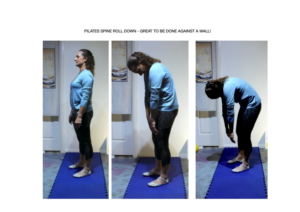
Looking at the last position above. We can rotate the position and you have the lovely Seated Spine Stretch.
The Seated Spine Stretch adds effort to the stretch as we don’t have gravity assisting so much. If hamstrings are tight, then you’ll both love and hate this version. Image 2 shows two options with bent legs, while image 3 shows a ball supported version.
2.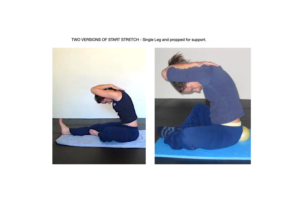 3.
3.
The final two exercises are adding greater challenge to the core. Firstly, the Pilates Roll Back. Which can be done following the Seated Spine Stretch. This is a key aspect of pure Pilates sessions, where one exercise rolls (literally) into the next. Image 4 shows a bent leg version of the Roll Back, starting from seated and finishing on your back.
4.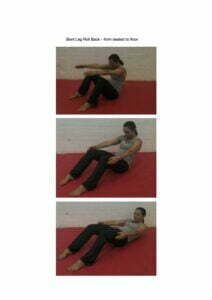
Next is the Pilates Roll Up. As you will see, each exercise is a progression from the previous in terms of load and effort required. The base move is the same which is flexing the spine and leaning/rolling forward.
The Pilates Roll Up and Roll Over challenges both core control and the entire back line (for those familiar with Anatomy Trains!) Image 5 shows the traditional Straight Leg version of the Roll Up. Whilst image 6 provides a modified Bent Leg version (which is the reverse of the Roll Back above). Image 7 is the Roll Over, which starts on your back and finishes folded over.
5.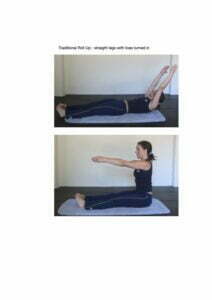 6.
6.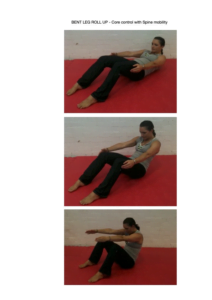 7.
7.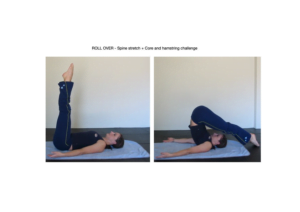
As you can appreciate there are also numerous exercises which take the spine in all directions. Extension, which is bending backwards. Rotation which twists the spine and Side Bending the spine.
If the above exercises ignite some interest, do find a qualified Pilates provider or you’ll find my contact details below.
To finish, having been the patient for so long, then becoming the therapist allowed me to truly understand where clients and patients are in their journey. Studying the psychotherapy gave me the language skills to inspire both hope and intrinsic motivation for self-care. Which I’m finding is now bundled into ‘trauma-informed’ care to keep up with the times. “Anato-mology” was coined to express the focus on the anatomy within both the clinical work and introductory movement work I share at Posture Plus. Note the Spine position in the image below!
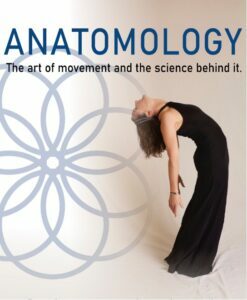
I’ll always be a tactile therapist, these days teaching movement and sharing Posture Plus is the focus. Mostly getting people moving, as they don’t need a lot of therapy. Therapy (In My Humble Opinion) is a back-up. Hands-on work is a way to progress things that are stagnating, or a way to get “back on track” with a check in or as I like to call it a “seasonal tune-up”.
To me my business has always been like that fishing quote…
“Teach a man to fish and he can feed himself for the rest of his life”.
If I can teach you functional anatomy in common language and immerse it into your DAILY tasks, then we are a team forever.








